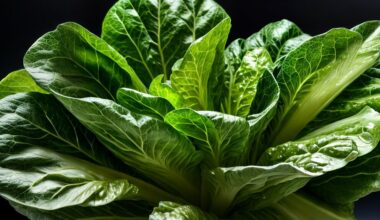Do you struggle with maintaining a weed-free lawn? Weeds can quickly take over and ruin the look of your yard. Fortunately, there is a solution: halts. Applying halts to your lawn can help prevent weeds from germinating and taking root in your yard.
But when should you apply halts? In this section, our experts will provide you with tips and tricks to help you with the halting process.
Key Takeaways:
- Halts prevent weeds from germinating and taking root in your lawn.
- Timing is crucial for the halting process.
- Expert tips can help you maintain a weed-free yard.
Understanding the Halting Process
When it comes to weed control in your lawn, understanding the halting process is crucial. Halts are pre-emergent herbicides that work by preventing weed seeds from germinating, ultimately reducing the number of weeds that grow in your lawn.
The timing of halting applications is critical to their effectiveness. If applied too early, before the soil temperature is warm enough, halts may break down and lose their potency before weeds start to grow. If applied too late, after weeds have already germinated, halts will be ineffective.
Knowing when to apply halts starts with understanding the types of weeds that grow in your area and their germination patterns. Some weeds, like crabgrass, have predictable germination windows and require specific timing for effective halting applications. Other weeds, like dandelions, can germinate throughout the growing season, making it more challenging to prevent their growth with halts alone.
| Tip: | Consult with a lawn care professional or university extension service in your area for guidance on the optimal timing of halting applications based on your local climate and weed species. |
|---|
It’s also important to note that halts can have some limitations. While halts are effective at preventing the majority of weed seeds from germinating, they aren’t always 100% effective. Additionally, halts only prevent the growth of new weeds, so they won’t eliminate existing weeds in your lawn. Combining halts with other weed control strategies, like post-emergent herbicides and manual weed removal, can help ensure a weed-free lawn.
In summary, understanding the halting process and timing halting applications correctly is key to achieving effective weed control in your lawn. Keep in mind the types of weeds in your area, their germination patterns, and consult with a lawn care professional or extension service to determine the optimal timing for halting applications in your specific climate and region.
Optimal Timing for Halting Applications
Timing is key when it comes to applying halts for effective weed control in your lawn.
For pre-emergent weed control, it’s important to apply halts before weed seeds germinate and emerge from the soil. This typically means applying halts in the early spring or late winter, depending on your region and climate.
Note: Consult with a local lawn care professional for specific recommendations based on your area and the types of weeds commonly found in your region.
On the other hand, post-emergent weed control with halts is best done during the fall season. This allows the herbicide to reach the roots and prevent future growth of weeds.
Another factor to consider is the soil temperature. Halts should be applied when the soil temperature is at the optimal range for weed seed germination, which is typically between 55-60 degrees Fahrenheit.
Using a soil thermometer can help you determine the right time for halting applications.
Timing Tips for Different Regions
The optimal timing for halting applications can vary depending on your region:
| Region | Timing for Pre-Emergent Halts |
|---|---|
| Northern | Early to Mid-Spring |
| Southern | Late Winter to Early Spring |
| Pacific Northwest | Early Spring and Early Fall |
Remember to adjust your timings according to the weather conditions in your region, and always read the instructions on the halts package carefully before applying.
By following these optimal timing guidelines and regional tips, you can ensure maximum effectiveness from your halting applications, leading to a healthy and weed-free lawn.

Proper Use and Strategies for Halts
Now that you understand the importance of timing and the halting process, it’s time to learn about the proper use of halts and effective strategies for weed control.
Firstly, always read the label instructions carefully before applying halts. Different types of halts have different application rates and guidelines, so be sure to follow them exactly for optimal results.
One key strategy for effective weed control is to use halts in combination with pre-emergent herbicides. Applying halts before pre-emergent herbicides can create a barrier that prevents weeds from germinating, while also providing long-lasting protection.
Another strategy is to apply halts during the growing season, as this is when weeds are most active. It’s important to keep in mind that halts are only effective for a limited time, so repeat applications may be necessary throughout the season.
In addition, avoiding mowing your lawn for at least two days before and after applying halts can help maximize their effectiveness, as this will allow the halts to settle into the soil and create a barrier against weed growth.
Finally, always store halts in a cool, dry place and away from children and pets. Improper storage or use of halts can be dangerous, so it’s important to handle them with care.
By following these proper use and strategies for halts, you can effectively control weeds in your lawn and maintain a healthy, beautiful yard.

Conclusion
Congratulations! You now have a better understanding of when to apply halts for effective weed control in your yard. Remember, timing is crucial when it comes to halting applications. Applying halts too early or too late can lead to subpar results and potentially harm your lawn.
We recommend referring back to this article when planning your yard maintenance schedule to ensure you are maximizing the effectiveness of halts. With proper use and timing, halts can be a powerful tool to keep your yard weed-free and healthy.
Thank you for reading, and happy halting!







